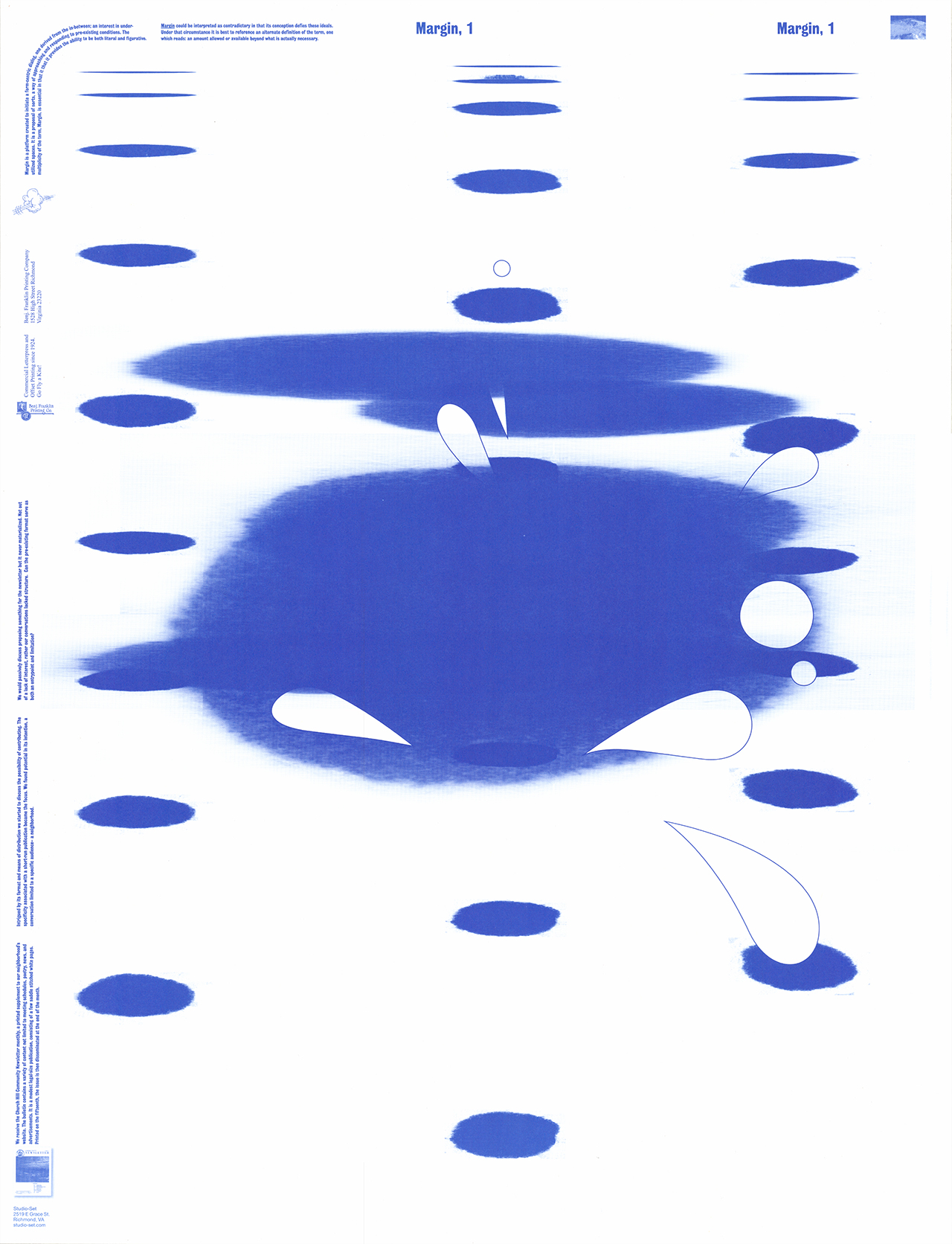Margin is a platform created to initiate a form-centric dialog, one derived from the in-between; an interest in under-utilized spaces. It is a proposal of sorts, a way of approaching and responding to pre-existing conditions. The multiplicity of the term, Margin, is essential in that it provides the ability to be both literal and figurative.
Margin could be interpreted as contradictory in that its conception defies these ideals. Under that circumstance it is best to reference an alternate definition of the term, one which reads: an amount allowed or available beyond what is actually necessary.
Days We Don't Know Yet*
For so many days we were living life to the fullest
So many moments passed until we lost our breath
When you regret those that haven't left anything for you
There's only one thing you should know, remember that...
Important are only the days that are yet to come
Important are only those few moments that we wait for
Important are only the days that are still to come
Important are only those few moments that we wait for
How to recognize the people which we already forgot?
How to collect the scattered thoughts?
How to separate the heart and the mind?
How to hear oneself among the loudly singing crowd?
How to recognize the people which we will know?
How to save our aims and intentions?
How to discover the joy and hope?
Look for the answer, there's not much time left...
Important are only the days that are yet to come
Important are only those few moments that we wait for
Important are only the days that are still to come
Important are only those few moments that we wait for
'This is more or less a statement for contemporary practice.'
Text is an appropriation
of the song 'Dni, których jescsze nie znamy' by Marek Grechuta
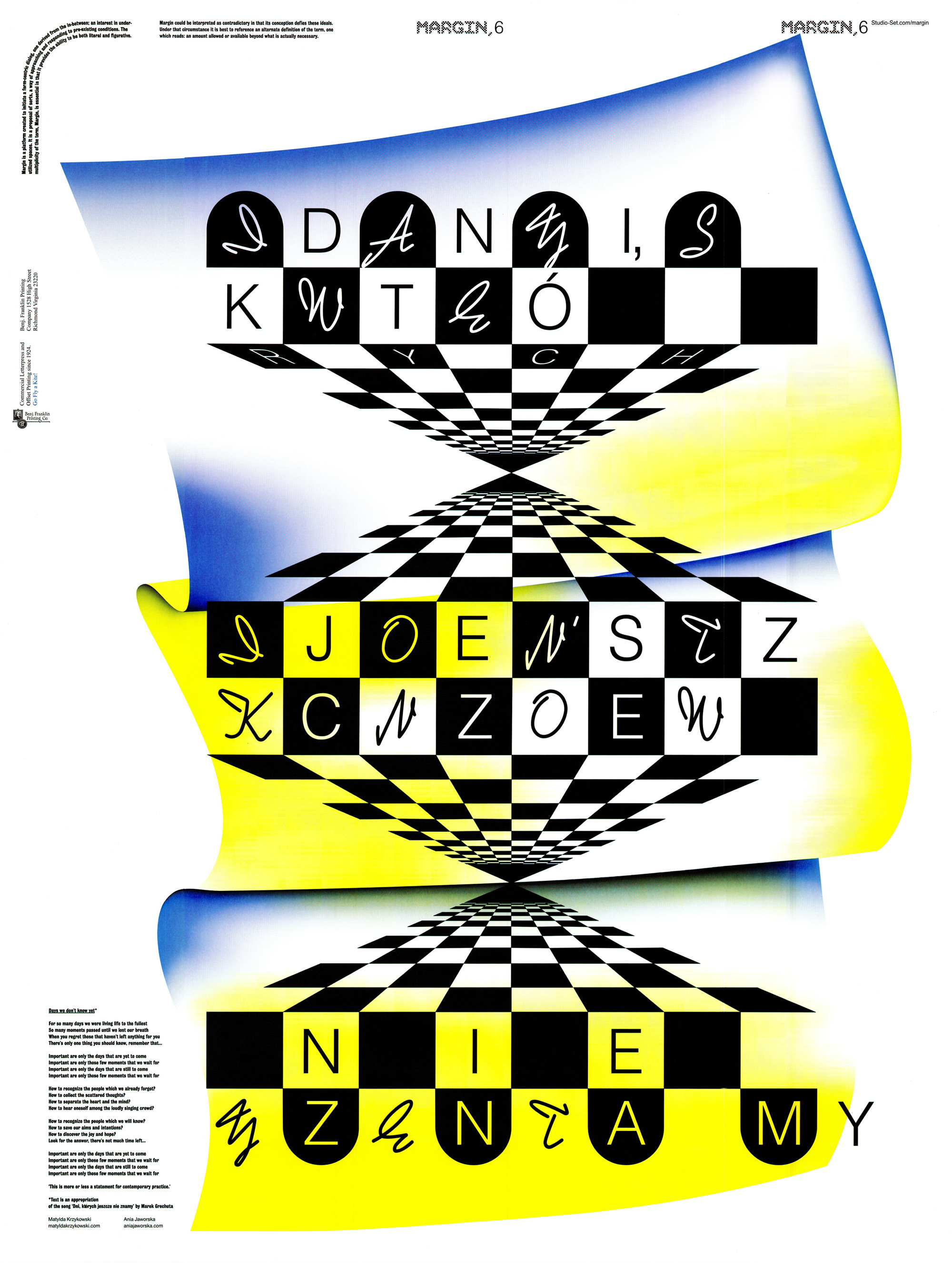
Kuwaiti resistance publications were distributed discreetly during the Iraqi invasion (1990–1991). The main purpose of these publications was to spread and share news, list danger zones, and to provide encouragement during the invasion. Since the Iraqis only broadcasted and published propaganda, these publications, referred to as manshoorat /plural/; manshoora /singular/ in Arabic, included information such as nationalistic poems, caricatures of Saddam Hussein, and names of traitors. The format was basic: one handwritten, A4 double-sided sheet of paper. I first learned of these publications during my sixth grade history class. My teacher told us how the publications were an individual effort and how people would find them hidden under the main entrances of their homes (this was confirmed by two other accounts). I remember telling my mother about what I had learned in class that day and she told me that three of my uncles were part of the resistance (two were P.O.W.’s) and that she had saved a few copies of the banned publications.
There are not many surviving examples of manshoorat since people burned them after reading as to avoid punishment. Many people were taken as P.O.W.’s and tortured or executed for making and distributing these publications. The sentence for someone caught in possession of one was execution. My mother never wanted to leave Kuwait; we stayed put until the liberation day. The publications from my mother’s collection are now safeguarded in a small briefcase that she inherited from my grandfather. It contains many memories and treasured documents and trinkets.
There were many different groups and individuals making and distributing these resistance publications. Each had its own name: Mos/The secret national resistance المقاومة الوطنية السرية/ موس, Kuwait Alsomod/International commission for solidarity with Kuwait الهيئة العالمية للتضامن مع الكويت/ كويت الصمود, Alsomod Alsha’abi/Kuwait national resistance movement/Hamak حماك/ حركة المقاومة الشعبية الكويتية / الصمود الشعبي, and Alsabah الصُباح.
My research into finding surviving copies of manshoorat led me to an old blog that included several copies different than those in my mother’s collection. They were collected by a 13-year-old Kuwaiti girl who glued them to the inside of her scrapbook. Like me, she stayed in Kuwait for the entire duration of the invasion. My mother found the publications in Al Andalus Block 3 and the 13-year-old Kuwaiti girl found them in Sabah Al-Salem Block 6. Despite the lack of physical copies that have been saved and made available to the public, I continue to research this topic and try to record as many accounts of manshoorat as possible. Sharing the history and stories of the Kuwaiti resistance publications is my attempt to preserve an important part of history that has been poorly documented.
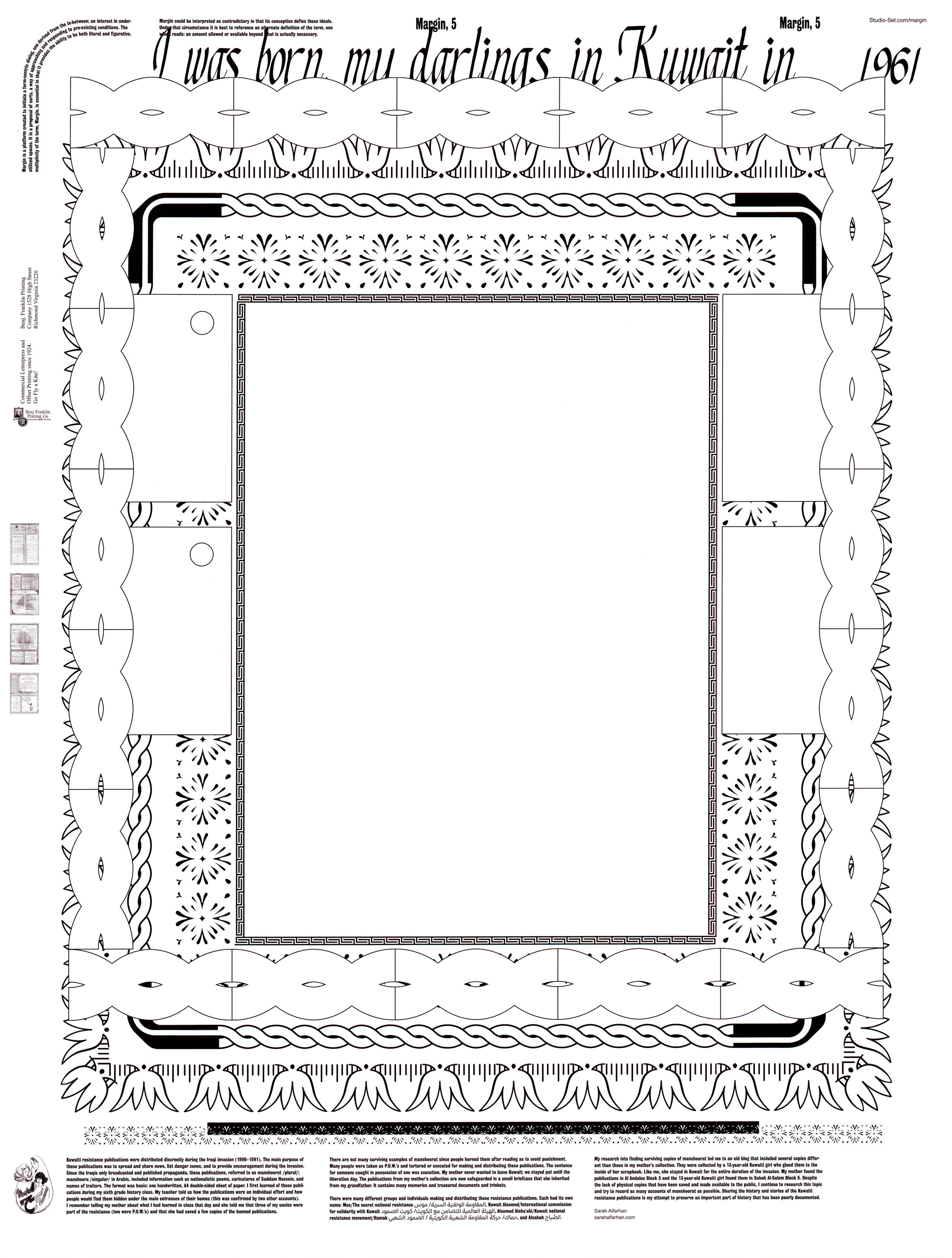
A design practice. An art practice. A writing practice. Research practice. A seeing practice. A listening practice. Meditation practice. A connectivity practice. A peace practice. A don’t forget about everything practice. A staying out of my own way practice. The speak first / think later practice (more jazz than proclamation.) Furniture, objects, space, books, music, publishing, food, swimming, smiling, love, sharing, translation. And a remembering the ocean as the pathway back practice. A daily practice.
Like everyone though, I’m too busy to be that busy. And, it’s impossible too. So what emerges is an “open practice” which seems to manifest from what Wordsworth described as a “wise passiveness”. An intention of non-careless and gentle indifference that gives way to a kind of attention. An effort but one that remains blank, or what Barthes has referred to as ‘the Neutral’, which baffles and outplays the paradigm. This attention is ready to be ready. It participates and then responds by evoking or stirring, rather than informing.
Using the word faith makes me nervous but, doubting that the plant will grow towards the light rather than the wall seems foolish. And thus, trust as an action and a way of being is generally a necessary structural element of open practice. Trusting in these things that come to get us... the worlds that consistently and constantly open up in a flash or without any drama at all... they're so much easier to metabolize than all those things we want and wanted (what a bad habit!). It's when following becomes indistinguishable from leading.
Open practice is a form of awareness that knows and accepts ego and capitalism while avoiding them in whatever ways possible. Authorship, hierarchy, leverage, separateness, self. Open practice is not a stance against these things, as we’ve learned now that most often a reaction against invokes a reverse and perpetuates a confirmation of their power. Rather, it contains a built in resistance to them (more magnet to magnet, less oil in water.) Not against or anti but instead a consistent spirit of counter. Or as Svetlana Boym put it - “off” - meaning not Luddite but rather willingly ludic and accepting.
I find that I don’t know how to find the work I really want when I look for it. And this looking that comes from desire and expectation is inside our great unfolding, not outside. So by staying with the INT\EST\EXT I want to remember that both the umbrella and the kite function through an act of resistance, but one is about stopping and one is about starting.
And I know what open practice is if no one asks me what it is; but if I want to explain it to someone who has asked me, I find that it’s hard… luckily, open practice is also an attempt at integrity and it seems that if one is operating with openness and integrity, we are probably saying “I don’t know” and “I’m not sure” a lot.
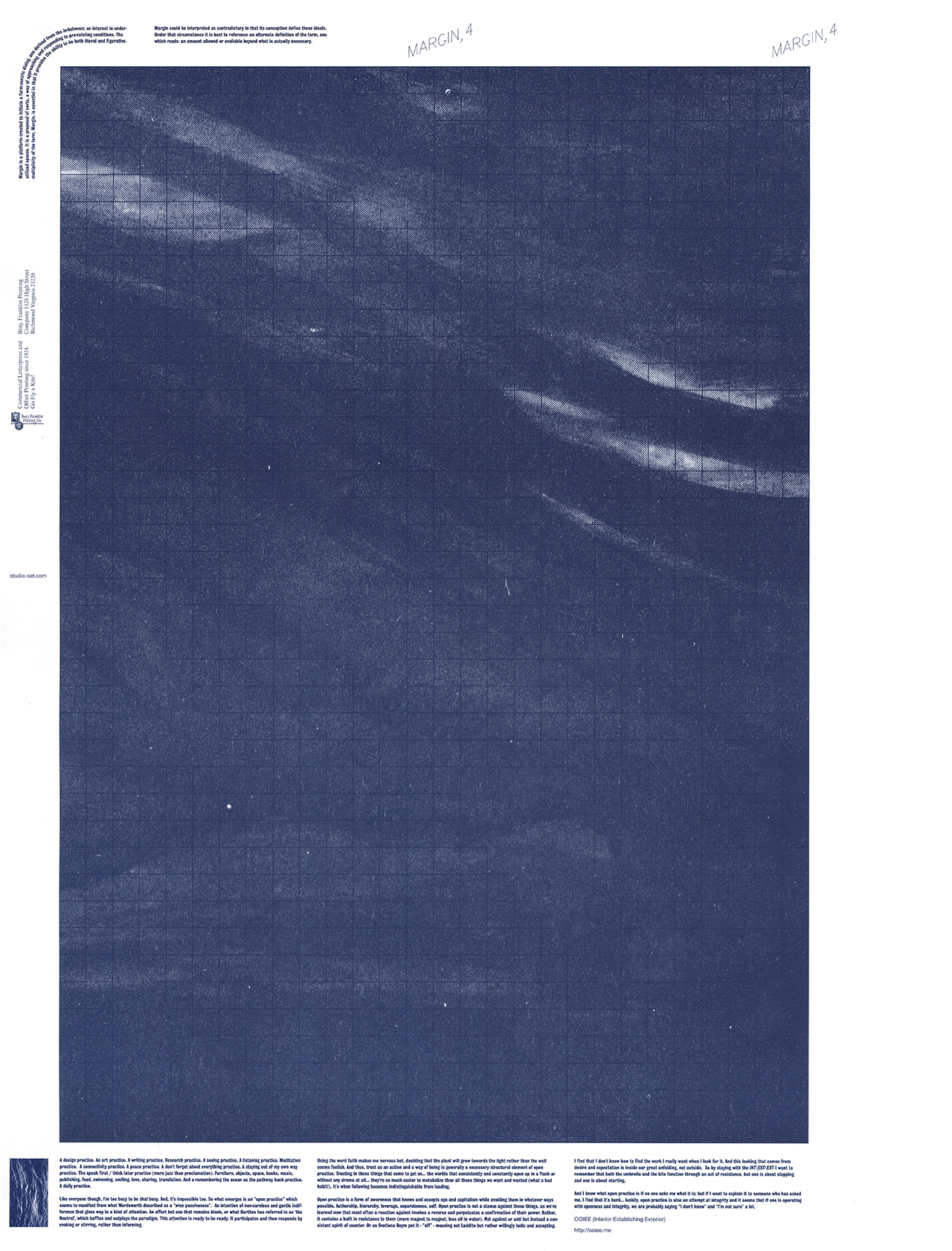
Within this fiction is a hypothetical text that is hand delivered, rolled, and rubber-banded to your door handle. The neighborhood newsletter is a networked text attaining its reason for being solely because of its context; in this it is inherently site conditional. Site here a question not just of space, but of platform - means and modes of address. The way one arrives at a text, or discards it: Is it unrolled as you arrive home on Monday evening, told to you by a cashier at the corner store, told to you by a critic in the local paper, recycled in the waste container in the alley, or discarded as a forgotten hyperlink? And what does this indicate about its character, its meaning, its associations?
The content of the newsletter appears more truthful because of its particular context - an authenticity that persists past the aura of the orator to gain a reclaimed aura of its specific form of reproduction, distribution and dissemination. It is subtracted as media for lack of mass, nor is it personal speech, but a mediated public address on behalf of a site, a neighborhood. An artwork cannot be believed, nor can a critic, but the newsletter always appears contextually true, carrying its veracity within its medium, mode of speech, methods of dispersal, as well as through its reader.
The margins are for questions; this marginalia, a kind of errata encircling the assertions of the logic of blocks of content, text and image dropped into an understood format. The margin is no more believable than the body, but the individuality of the deviation destabilizes each, enabling the reader to piece together a text in question, a form in suspension, eschewing the aura for the further investigation of the newsletter, the neighborhood, the neighbor, and the constellation of truths among these recipients, as well as you, the reader.
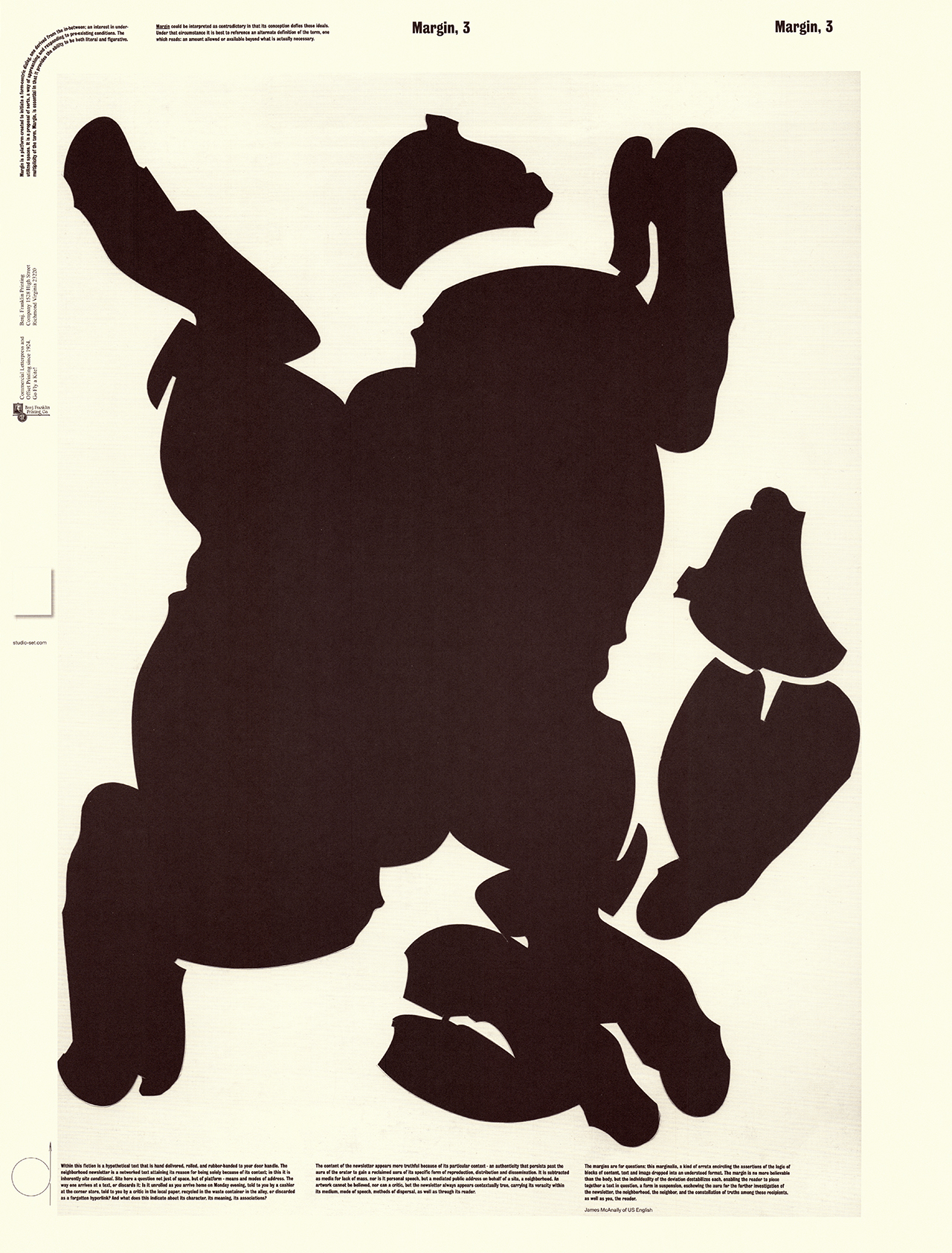
Print Gallery is on the first floor of a residence-workshop built in 1964. In Shirokane, one of Tokyo's commercial district where the gallery is located, buildings lie in a labyrinthine configuration on land where black markets once sprouted on the scorched earth of postwar Tokyo. An infrastructure comprised of individually-owned plots of land has remained but the “contents” of those spaces has continuously changed. Both residential and commercial space has moved from workshop to store, store to residence, greengrocers to general store, residence to rental space.
Currently, there are redevelopment plans (perhaps due to the upcoming 2020 Tokyo Olympics) to restructure entire districts and rebuild them from the ground up. These areas will be developed in accordance with contemporary seismic and fire resilient building standards or with government-sanctioned urban reinvigoration plans. Developers will inevitably dictate the structure and contents of this new place. Throughout the commercial district will be new residential apartment blocks, an office, a low-rise building with a Starbucks. A supermarket or pharmacy. A terrace with an unclear purpose, and a park littered with signs saying, "please don't eat your lunch here", "Put a leash on your dog", or "No ball games allowed". This newly built town would leave few possibilities for individuals as it is overcome by various ordinances.
Infrastructures that supports spontaneity, for better or for worse, perpetuate interpretation on how space is perceived and utilized. It may seem haphazard or entropic, but this model (Or lack thereof) yields various and unpredictable possibilities for the future usage/content of a structure.
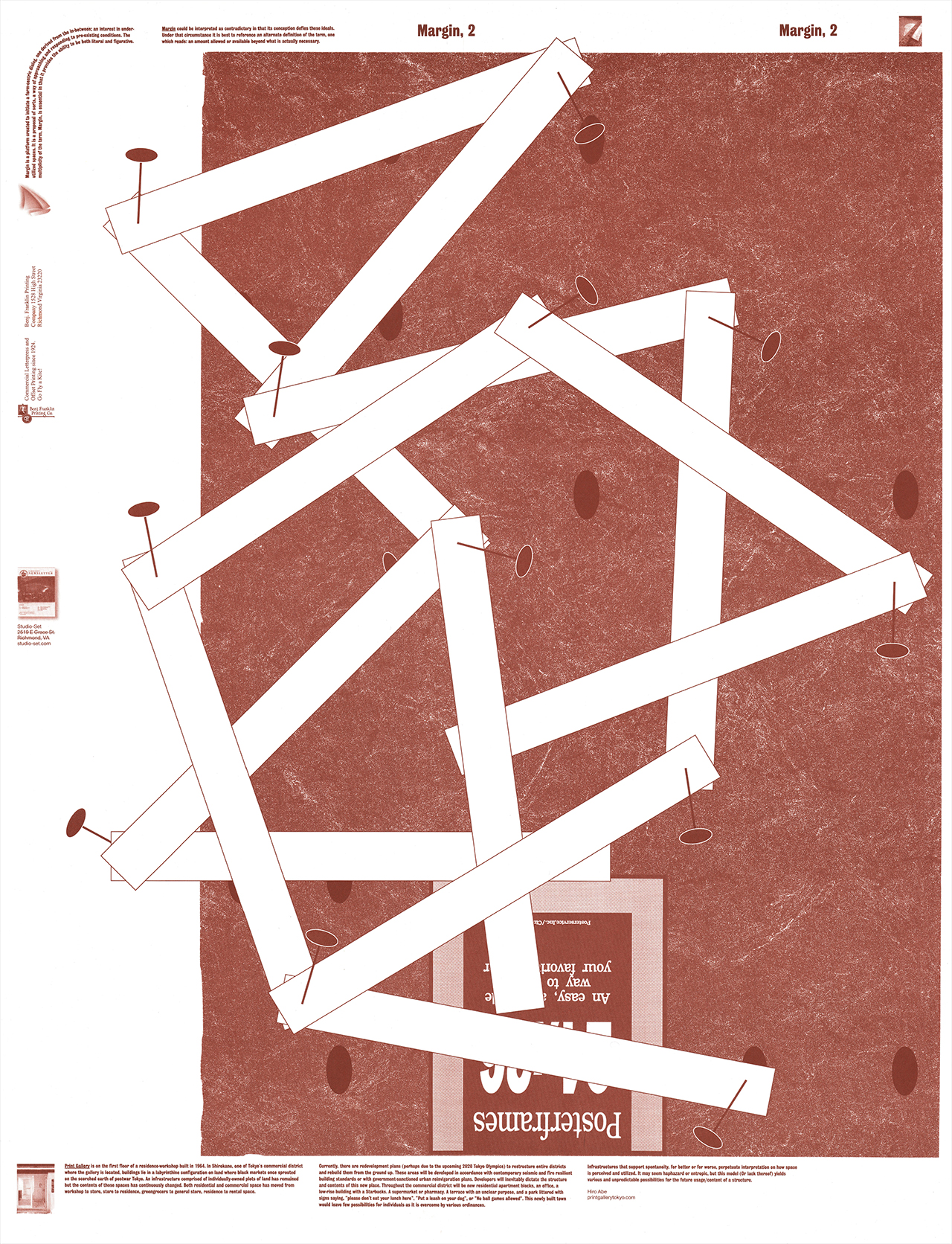
We receive the Church Hill Community Newsletter monthly, a printed supplement to our neighborhood’s website. The bulletin contains a variety of content not limited to meeting schedules, poetry, news, and advertisements. It is a modest legal-size publication, consisting of a few saddle-stitched white pages. Printed on the fifteenth, the issue is then disseminated at the end of the month.
Intrigued by its format and means of distribution we started to discuss the possibility of contributing. The specificity associated with a short-run publication become the focus. We found potential in its intention, a conversation limited to a specific audience– a neighborhood.
We would passively discuss proposing something for the newsletter but it never materialized. Not out of a lack of interest, rather our conversations lacked structure. Can the pre-existing format serve as both an entrypoint and limitation?
